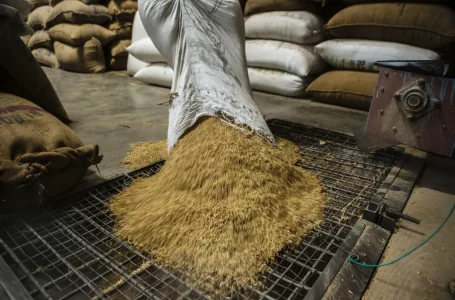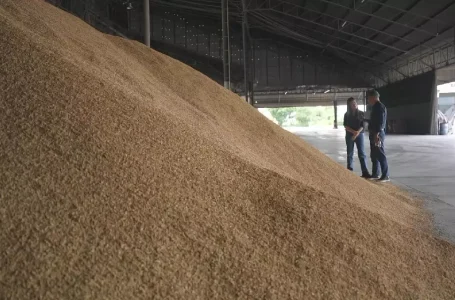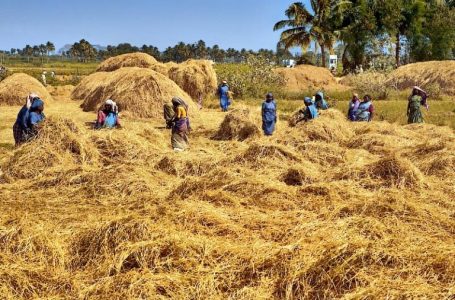Rice imports from Brazil raising concerns
U.S. rice supplies expected to be up more than 8 percent in 2018-19. So why is the U.S. importing more rice?.
U.S. rice supplies are expected to be up by more than 8 percent in 2018-19, mainly due to increased plantings and average yields in Arkansas, according to USDA. So why is the U.S. importing more rice?
Until the last few years, the U.S imported very little rice aside from specialty rice for the Asian-American market, according to Dr. Nathan Childs, senior agricultural rice economist with USDA’s Economic Research Service. That situation is changing.
“Just a few years ago it looked like imports had leveled off; that they were maybe starting to decline a little bit,” said Childs, a speaker for the latest in the University of Arkansas System Division of Agriculture series of Food and Agribusiness Webinars. To see the webinar: https://bit.ly/2E2BEla.
“But we’ve seen something very different in the last two years,” he said. “Very strong imports that will be a record for sure. It is not due to brokens (kernels of rice). The U.S. does import brokens, but it’s really due to milled rice.”
The bulk of U.S. rice imports typically have come from Asia, Childs noted, with Thailand supplying about 60 percent and India and Pakistan at least 20 percent. Imports are expected to reach about 28 million hundredweight for the second year in a row in 2018-19.
See also: U.S. rice farmers losing market share in Mexico, Latin America
“I want to show you that, in recent years, Brazil has accounted for more U.S. rice imports,” he said, referring to a slide showing Brazil’s rice exports to the U.S. since 2006. “This is not a lot of rice, maybe around 30,000 tons (in 2017-18). But it came from 4,000 or 5,000 tons.
“So that’s Brazil exporting into the U.S., that’s milled rice. Again, as a share, it’s not real high. The U.S. imports maybe a little over 800,000 tons annually. And 30,000 or 40,000 is not a huge share by any means. But it came from a very low number previously.”
Puerto Rico
Another “odd” development involves China and Puerto Rico, which is a part of the United States although it has not achieved statehood.
“In years past, Puerto Rico imported medium grain rice from China,” said Childs. “But for almost a decade, it imported virtually zero. Now, the census is showing Puerto Rico’s back to taking some rice from China. The bulk of U.S. rice from China is landing in Puerto Rico.”
USDA’s World Agricultural Supply and Demand estimates project U.S. rice supplies at roughly 280 million hundredweight in 2018-19 or about 8 percent higher than in 2017-18. That’s mainly due to increased plantings in Arkansas since the carry-in and imports are roughly the same as last year. (Arkansas accounts for 61 percent of the 150,000-acre increase in the U.S. in 2018.)
“The crop is up,” he said. “Carry-in is down a little. Imports about the same. So it’s driven by a much larger crop. Notice that U.S. rice exports are projected to increase 13 percent. Domestic use about the same. Why are exports expected to increase? More supplies, more competitive prices, and they need to be more competitive to move that rice.”
The need to increase exports is coming at a time when the U.S. is facing increased competition for what, until now, has been its primary exports market in the region of Mexico and Central America.
“Latin America accounts for 60 percent of U.S. rice exports,” said Childs, referring to a slide depicting U.S. rice shipments by country and region going back to the 1990s. “You can see that Mexico, and then the rest of Latin America, are important to the U.S. rice industry.”
On the other hand, Latin America accounts for 80 percent of U.S. long-grain rice exports. “So it’s even more important for the South, which primarily grows long-grain rice. California, which primarily grows medium-grain rice, doesn’t ship much to Latin America.”
Uruguay and Guyana, two relatively new rice exporters in South America, nearly doubled their shipments to Mexico in 2017, said Childs, and they are making more inroads in 2018.
“But the most troubling development,” he said, “is the significant increase in shipments of Brazil’s milled rice into the U.S., particularly along the East Coast, beginning in Florida and moving up through the Southeast.”







